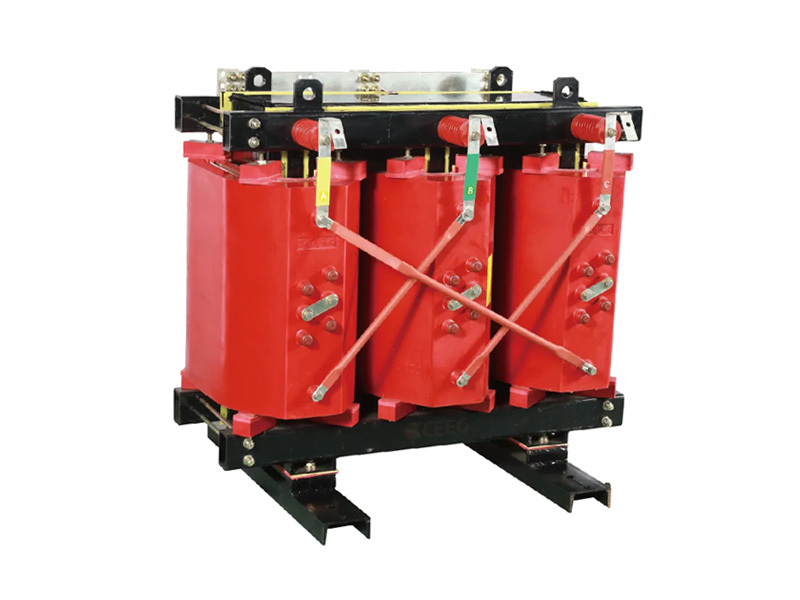He' Nan Chineng Electric Power Equipment Co., Ltd
Exploring the Benefits of Oil-Immersed Substation Transformers in Electrical Engineering
Apr 30,2025
Exploring the Benefits of Oil-Immersed Substation Transformers in Electrical Engineering
Table of Contents
- 1. Introduction to Oil-Immersed Substation Transformers
- 2. What is an Oil-Immersed Transformer?
- 3. Advantages of Oil-Immersed Substation Transformers
- 3.1 High Efficiency
- 3.2 Enhanced Thermal Management
- 3.3 Durability and Reliability
- 3.4 Environmental Safety
- 4. Applications of Oil-Immersed Substation Transformers
- 5. Maintenance and Lifespan of Oil-Immersed Transformers
- 6. Cost-Effectiveness of Oil-Immersed Transformers
- 7. The Future of Oil-Immersed Transformers in Electrical Engineering
- 8. Frequently Asked Questions
- 9. Conclusion
1. Introduction to Oil-Immersed Substation Transformers
Oil-immersed substation transformers are integral components in electrical engineering, primarily used to step down voltage levels for efficient power distribution. These transformers utilize oil as an insulating and cooling medium, offering various benefits over their air-cooled counterparts. In this article, we will explore the unique features and advantages of oil-immersed transformers, focusing on their importance in modern electrical systems.
2. What is an Oil-Immersed Transformer?
An oil-immersed transformer is a type of transformer that has its core and windings submerged in oil. This oil serves multiple purposes: it acts as an insulator, dissipates heat generated during operation, and prevents oxidation of the internal components. These transformers are widely used in substations, where they play a crucial role in transforming high voltage electricity to lower voltages suitable for distribution.
3. Advantages of Oil-Immersed Substation Transformers
Oil-immersed substation transformers offer several key advantages that make them a preferred choice for utility companies and electrical engineers alike.
3.1 High Efficiency
Oil-immersed transformers are known for their **high efficiency** rates, typically exceeding 98%. This efficiency is attributed to the superior dielectric properties of the oil, which reduces energy losses. As a result, utility companies can minimize operational costs and maximize energy savings.
3.2 Enhanced Thermal Management
The oil within these transformers provides excellent **thermal management**. It effectively transfers heat away from the windings and core, ensuring that the transformer operates within safe temperature limits. This characteristic allows oil-immersed transformers to handle higher power loads and increases their overall lifespan.
3.3 Durability and Reliability
Durability is a hallmark of oil-immersed substation transformers. The oil acts as a protective barrier against moisture and contaminants, significantly enhancing **reliability**. These transformers can operate in harsh environments without significant degradation, making them ideal for remote and industrial installations.
3.4 Environmental Safety
Recent advancements in oil technology have led to the development of **environmentally friendly** insulating oils, reducing the ecological impact of oil spills. Additionally, the design of these transformers includes robust containment systems to prevent leaks, aligning with contemporary environmental regulations and standards.
4. Applications of Oil-Immersed Substation Transformers
Oil-immersed transformers are versatile and find applications in various sectors, including:
- **Power Generation Stations:** They are used to step down voltage levels for distribution.
- **Renewable Energy Integration:** In solar and wind farms, oil-immersed transformers help to convert generated electricity to usable voltage levels.
- **Industrial Plants:** These transformers are crucial for running heavy machinery and equipment that requires specific voltage levels.
- **Urban Distribution Networks:** They ensure reliable electricity supply in city environments by managing voltage and load effectively.
5. Maintenance and Lifespan of Oil-Immersed Transformers
Regular maintenance is essential for ensuring the longevity of oil-immersed transformers. Key maintenance practices include:
- **Oil Testing:** Periodic oil testing helps identify deterioration and monitor insulation properties.
- **Cooling System Checks:** Ensuring the cooling system functions correctly is critical for preventing overheating.
- **Visual Inspections:** Regular inspections for leaks, corrosion, and structural integrity are necessary.
With proper maintenance, oil-immersed transformers can have a lifespan exceeding 30 years, offering utility companies and consumers long-term reliability.
6. Cost-Effectiveness of Oil-Immersed Transformers
The initial investment in oil-immersed transformers can be higher than that of air-cooled transformers. However, the **cost-effectiveness** comes from lower operational costs due to reduced energy losses and extended lifespan. This long-term savings make oil-immersed transformers a financially sound investment for utility companies.
7. The Future of Oil-Immersed Transformers in Electrical Engineering
As electrical engineering continues to evolve, so does the technology behind oil-immersed transformers. Innovations such as biodegradable oils and advanced monitoring systems are paving the way for smarter, more efficient transformers. These advancements will not only enhance performance but also align with global sustainability goals.
8. Frequently Asked Questions
What is the primary function of oil-immersed transformers?
Oil-immersed transformers primarily step down high voltage electricity to lower voltage levels for safe distribution.
Why are oil-immersed transformers preferred over air-cooled transformers?
They offer better thermal management, higher efficiency, and greater durability, making them suitable for various applications.
How often should oil tests be conducted on transformers?
Oil tests should be performed at least once every 2-3 years to monitor insulation quality and detect any potential issues.
Can oil-immersed transformers operate in extreme weather conditions?
Yes, they are designed to withstand harsh environmental conditions and maintain reliability.
What measures are taken to ensure environmental safety with oil-immersed transformers?
Modern transformers are equipped with containment systems to prevent oil leaks and utilize environmentally friendly insulating oils.
9. Conclusion
Oil-immersed substation transformers play a vital role in electrical engineering, offering numerous benefits such as high efficiency, enhanced thermal management, durability, and environmental safety. Their versatility and reliability make them indispensable in modern power distribution systems. As technology advances, the future of oil-immersed transformers looks promising, ensuring they will continue to meet the evolving demands of the electrical engineering landscape. Understanding and leveraging the advantages of these transformers will be crucial for utility companies and engineers striving for efficiency and sustainability in power management.










